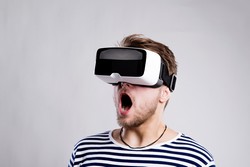New light shed on spatial memory
Remembering where we placed objects and knowing how objects are distributed around us is crucial to our everyday functioning. Spatial memory – the ability to recall where we put items or how to reach landmarks around a city – helps us in our everyday tasks. This also involves reasoning about locations (e.g. remembering where we left the keys) and recollections of distant places like planning a day in a city we've already visited. Against this backdrop, the EU-funded project OSSMA (Multiple systems of spatial memory: Their role in reasoning and action) studied spatial memory and reasoning through behavioural experiments. To achieve its aims, the project team conducted experiments using virtual reality head-mounted displays that test memories under different conditions. It looked at the variables that impacted retrieval and spatial information, such as redundant visual information, participants' orientation and layout of the space. The team mainly found that although spatial memories regarding immediate environments are influenced considerably by the orientation of the observer during retrieval, memories concerning other environments are not similarly affected. This means that people usually rely on a sensorimotor representation that maintains self-to-object relations when they reason about objects within their immediate surroundings. The study also found that the person-centric representation shifts as the observer changes position and/or orientation in the immediate environment. This possibly coexists with a representation that codes object-to-object relations, affecting reasoning once the observer moves to a distant location. The overall conclusions help improve upon current theories on spatial memory. They also help further the design of high-tech tools and equipment such as navigation systems and user interfaces for teleoperating equipment, from search-and-rescue robots to intricate surgical tools. A more in-depth understanding of spatial memory will continue to make human-machine interaction safer and more efficient.



